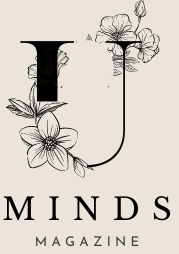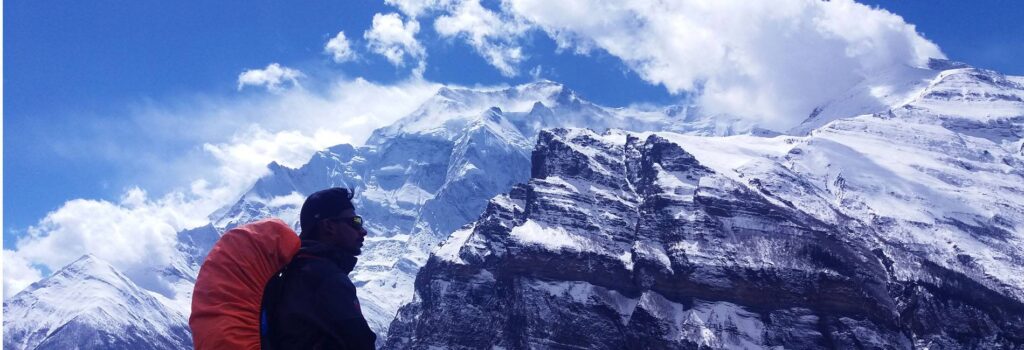Embarking on the Annapurna Circuit trek is an adventure of a lifetime, offering breathtaking Himalayan vistas and a rich cultural experience. Proper packing is crucial to ensure comfort, safety, and enjoyment throughout the journey. Here’s a comprehensive guide to the top 10 essential items you should pack for a successful trek:
Quality Trekking Boots: Invest in sturdy, well-fitted trekking boots with ankle support. The diverse terrain of the Annapurna Circuit demands footwear that provides comfort and protection.
Layered Clothing: Pack lightweight, moisture-wicking base layers, insulating mid-layers, and a waterproof outer shell. Weather in the Himalayas can change rapidly, so versatile clothing options are essential.
Sleeping Bag: Choose a high-quality sleeping bag suitable for cold temperatures. Teahouse accommodations along the trail may not always provide sufficient warmth, especially at higher altitudes.
Trekking Poles: These provide stability on uneven terrain and reduce strain on your joints during steep ascents and descents. Adjustable poles are ideal for adapting to different trail conditions.
First Aid Kit: Include essentials like adhesive bandages, blister treatment, pain relievers, antiseptic wipes, and any personal medications. Access to medical facilities may be limited in remote areas.
Water Purification: Carry a reliable water purification system or purification tablets to ensure safe drinking water throughout the trek. Refill stations with filtered water are available at various points along the trail.
Headlamp or Flashlight: Essential for navigating trails in the early morning or after dusk, especially when reaching guesthouses late in the day. Don’t forget to pack extra batteries.
Sun Protection: Pack sunglasses with UV protection, a broad-brimmed hat, and high SPF sunscreen. UV rays are stronger at higher altitudes, making sunburn and eye protection crucial.
Trekking Backpack: Opt for a comfortable, durable backpack with a capacity of 30-40 liters to carry essentials like water, snacks, extra clothing layers, and your camera or binoculars for capturing the stunning scenery.
Personal Toiletries and Hygiene Supplies: Pack travel-sized toiletries, biodegradable wet wipes, hand sanitizer, and a small towel. Maintaining hygiene is essential throughout the trek.
By packing these essential items thoughtfully, you’ll be well-prepared to tackle the Annapurna Circuit trek with confidence. Remember to acclimatize properly, stay hydrated, and respect the natural environment and local culture along the way. With the right gear and mindset, your journey through the Himalayas promises to be an unforgettable adventure.
This description provides a brief overview of each essential item while emphasizing their importance for a successful trekking experience in the Annapurna Circuit.
Introduction
Embarking on the Annapurna Circuit trek offers an unparalleled adventure through the stunning Himalayan landscapes of Nepal. Whether you’re a seasoned trekker or embarking on your first high-altitude journey, proper preparation is key to a safe and enjoyable experience. This guide highlights essential gear and considerations to ensure you’re equipped for the challenges and rewards of this iconic trek.
Proper Footwear
Choosing the right footwear is crucial for tackling the varied terrain of the Annapurna Circuit. Opt for sturdy, waterproof trekking boots with good ankle support. The boots should be well broken-in to prevent blisters and provide comfort during long days of hiking. Look for soles with excellent grip to navigate rocky trails and slippery slopes confidently. Investing in quality footwear will enhance your stability and reduce the risk of injury, ensuring you can focus on enjoying the breathtaking scenery and cultural encounters along the way.
Layered Clothing
The weather in the Himalayas can be unpredictable, ranging from scorching sun to chilly winds and occasional rain or snow. Packing layered clothing allows you to adjust to changing conditions easily. Start with moisture-wicking base layers to keep sweat away from your skin. Insulating mid-layers such as fleece or down jackets provide warmth, while a waterproof and windproof outer shell protects against elements. This versatile system enables you to regulate body temperature throughout the day, whether ascending steep mountain passes or relaxing in teahouse accommodations. Be prepared for temperature fluctuations by packing layers that can be easily added or removed, ensuring comfort and enjoyment during your Annapurna Circuit adventure.
Comfortable Backpack
A comfortable and well-fitted backpack is essential for carrying your gear and supplies throughout the trek. Opt for a backpack with a capacity of 30-40 liters, which strikes a balance between carrying essentials and keeping weight manageable. Look for padded shoulder straps, a supportive hip belt, and adjustable back panels for optimal comfort and weight distribution. Organize your pack to keep frequently needed items easily accessible, such as water, snacks, sunscreen, and a camera. Choosing the right backpack ensures you can hike comfortably and safely, allowing you to focus on the stunning landscapes and cultural experiences of the Annapurna Circuit.
Sleeping Bag
A quality sleeping bag is essential for a comfortable and restful night’s sleep during the Annapurna Circuit trek. Temperatures can drop significantly at higher altitudes, so choose a sleeping bag with a temperature rating appropriate for cold conditions. Lightweight, compressible bags are ideal for packing convenience and should fit comfortably inside your backpack. Teahouse accommodations along the trail provide basic bedding, but a reliable sleeping bag ensures you stay warm and cozy, promoting recovery and energy for the next day’s trekking adventures. Prioritize warmth and comfort when selecting a sleeping bag to maximize your enjoyment of this epic Himalayan journey.
First Aid Kit
Carrying a well-stocked first aid kit is essential for managing minor injuries and illnesses during the Annapurna Circuit trek. Include adhesive bandages, blister treatment, antiseptic wipes, pain relievers, and any personal medications. High-altitude trekking presents unique health challenges such as altitude sickness and sunburn, so be prepared with appropriate medications and treatments. Familiarize yourself with basic first aid techniques and recognize symptoms that may require immediate attention. A compact and lightweight first aid kit ensures you can respond effectively to common trekking-related ailments, promoting safety and peace of mind throughout your journey in the majestic Himalayas.
These descriptions provide a comprehensive overview of essential gear and considerations for a successful Annapurna Circuit trek, ensuring you’re well-prepared for the adventure ahead.
Water Bottle and Water Purification Tablets
Staying hydrated is crucial while trekking the 14 Day Annapurna Circuit Trek. Carry a durable water bottle with a capacity of at least 1 liter to ensure you have access to clean water throughout the trek. While teahouses provide boiled water for a fee, it’s wise to carry water purification tablets or a filtration system. These ensure you can safely drink water from natural sources along the trail, reducing reliance on single-use plastics and minimizing environmental impact. Proper hydration supports acclimatization and energy levels, enhancing your overall trekking experience amidst the breathtaking landscapes of the Himalayas.
Snacks and Food Supplies
Maintaining energy levels with nutritious snacks and food supplies is essential for sustained trekking performance. Pack lightweight, high-energy snacks such as trail mix, energy bars, nuts, and dried fruits. These provide quick and convenient sources of calories and nutrients during breaks or long stretches between meals. While teahouses along the Annapurna Circuit offer meals, they may have limited options or varying availability. Carry essential food supplies like instant noodles, oatmeal, and tea bags for additional sustenance, especially at higher altitudes where appetite may decrease. Proper nutrition fuels your trekking adventures and supports recovery, ensuring you stay strong and resilient throughout the journey.
Navigation Tools: Maps and Compass
Navigating the diverse terrain of the Annapurna Circuit requires reliable navigation tools. Carry detailed maps of the region and a compass to orient yourself along the trail. While the route is well-marked in most places, unexpected weather conditions or trail diversions can occur. Familiarize yourself with the route beforehand and use maps to identify landmarks, villages, and elevation changes. A compass provides backup navigation if electronic devices fail or batteries run out. GPS devices or smartphone apps can also be useful but ensure you have offline maps downloaded. These navigation tools enhance your trekking experience by providing confidence in your route planning and orientation amidst the majestic Himalayan landscapes.
Headlamp with Extra Batteries
A dependable headlamp is indispensable for navigating trails during early morning starts, late arrivals at teahouses, or unexpected delays. Choose a headlamp with adjustable brightness settings and long battery life. Pack spare batteries or ensure your headlamp is rechargeable via USB for extended use. This hands-free lighting solution is essential for safety and convenience, particularly when trekking in low light conditions or crossing high mountain passes. Additionally, headlamps are useful for nighttime activities in teahouses or reading before bed. Prioritize lightweight and water-resistant headlamp models to withstand the rigors of high-altitude trekking on the Annapurna Circuit. Proper illumination ensures you can fully appreciate the natural beauty and cultural richness of this iconic trekking destination in Nepal.
These descriptions cover essential gear and considerations for a successful Annapurna Circuit trek, enhancing your preparedness and enjoyment of the journey.
Personal Hygiene Items
Maintaining personal hygiene is vital for comfort and health during the Annapurna Circuit trek. Pack a toiletry kit containing travel-sized items such as toothbrush, toothpaste, biodegradable soap, and toilet paper. Biodegradable wet wipes are convenient for freshening up when shower facilities are unavailable. Proper hygiene practices minimize the risk of infections and ensure you feel refreshed after long days of trekking. Respect local customs by disposing of waste responsibly and using designated facilities when available.
Sun Protection Essentials: Sunglasses and Sunblock
The intense Himalayan sun can be harsh at high altitudes, making sun protection crucial. Pack UV-blocking sunglasses with wraparound frames to shield your eyes from glare and UV rays. Choose sunglasses with high-quality lenses that provide clear vision in varying light conditions. Apply a broad-spectrum sunscreen with a high SPF rating to exposed skin, including your face, neck, and hands. Reapply sunscreen regularly, especially after sweating or swimming. Sun protection prevents sunburn, premature aging, and reduces the risk of skin cancer. Enjoy the stunning mountain views safely by prioritizing sunglasses and sunscreen as essential items in your trekking gear.
Emergency Shelter: Lightweight Tent or Emergency Blanket
Prepare for unexpected situations with an emergency shelter such as a lightweight tent or emergency blanket. While teahouses offer accommodation along the Annapurna Circuit, carrying a compact tent provides flexibility if accommodation is full or in case of emergencies. Lightweight tents are easy to set up and provide protection from wind, rain, and cold temperatures. Alternatively, carry a durable emergency blanket that reflects body heat to keep warm in unforeseen situations. Emergency shelters enhance safety and peace of mind, ensuring you’re prepared for diverse weather conditions and potential delays during your trekking adventure in the Himalayas.
Multi-tool or Swiss Army Knife
A multi-tool or Swiss Army knife is a versatile and compact tool that proves invaluable on the Annapurna Circuit trek. Choose a model with essential features such as a knife blade, scissors, screwdriver, and bottle opener. These tools are useful for repairing gear, preparing food, and handling various tasks during your journey. A multi-tool’s compact size and lightweight design make it easy to carry in your backpack or pocket, ensuring readiness for unexpected situations or daily needs. Invest in a quality multi-tool to enhance your trekking experience by providing practical solutions to challenges encountered along the trail.
Toiletry Kit
A well-equipped toiletry kit is essential for maintaining hygiene and comfort during the Annapurna Circuit trek. Include travel-sized items such as toothbrush, toothpaste, biodegradable soap, and toilet paper. Biodegradable wet wipes are convenient for freshening up when shower facilities are unavailable. Proper hygiene practices minimize the risk of infections and ensure you feel refreshed after long days of trekking. Respect local customs by disposing of waste responsibly and using designated facilities when available.
These descriptions provide a comprehensive overview of essential personal hygiene, sun protection, emergency shelter, multi-tool, and toiletry kit items for a successful Annapurna Circuit trek. Each item plays a critical role in ensuring your comfort, safety, and readiness throughout the journey in the Himalayas.
Insulated Jacket
An insulated jacket is essential for warmth during chilly mornings and evenings on the Annapurna Circuit trek. Choose a lightweight yet effective jacket filled with down or synthetic insulation. The jacket should be compressible for easy packing and provide sufficient warmth at higher altitudes. Layer it over your base and mid-layers for added insulation during breaks or rest stops. An insulated jacket is versatile, serving as a crucial barrier against cold weather and ensuring comfort throughout your trekking adventure amidst the majestic Himalayan landscapes.
Trekking Poles
Trekking poles are indispensable for stability and reducing strain on joints during ascents and descents along the Annapurna Circuit. Opt for adjustable poles made from lightweight yet durable materials. Adjust pole length according to terrain and personal comfort, improving balance on rocky or uneven trails. Trekking poles also provide support when crossing streams or navigating slippery surfaces, enhancing safety and confidence throughout the trek. Their ergonomic grips and wrist straps allow for a natural arm swing, promoting efficiency and endurance during long hiking days in the Himalayas.
Cash and Identification Documents
Carry sufficient cash in Nepalese rupees for purchases at teahouses, villages, and checkpoints along the Annapurna Circuit. While some places accept credit cards, cash is often preferred and necessary for transactions. Keep identification documents such as your passport and permits in a waterproof pouch for protection against moisture and wear. These documents are essential for verifying identity and permits at checkpoints along the trekking route. Securely store copies of important documents and emergency contact information in a separate location as a backup. Properly managing cash and identification ensures smooth interactions with locals, authorities, and service providers throughout your memorable journey in the Himalayas.
Communication Device: Cell Phone or Satellite Messenger
Maintaining communication capability is crucial for safety and peace of mind while trekking the Annapurna Circuit. Carry a fully charged cell phone with local SIM card and/or a satellite messenger device. Cell phones provide essential connectivity in villages with network coverage, allowing you to communicate with family, friends, or emergency services if needed. Satellite messengers offer global coverage and can send distress signals in remote areas where cellular network is unavailable. Prioritize device reliability, battery life, and weather resistance when selecting communication tools. Stay connected and informed throughout your trekking adventure, ensuring assistance is readily available in case of emergencies or unexpected situations in the Himalayas.
Conclusion
Preparing for the short Annapurna Circuit trek requires thoughtful consideration of essential gear and supplies to ensure a safe and enjoyable experience amidst Nepal’s stunning Himalayan landscapes. By packing wisely and prioritizing key items such as insulated jackets, trekking poles, communication devices, and personal documentation, you enhance comfort, safety, and readiness for the challenges of high-altitude trekking. Respect local customs, preserve the natural environment, and embrace cultural encounters along the trail to fully immerse yourself in this unforgettable adventure. With proper preparation and a positive mindset, your journey through the Annapurna Circuit promises moments of awe, personal achievement, and lasting memories amidst the beauty of the Himalayas.
These descriptions cover important gear and considerations for a successful Annapurna Circuit trek, ensuring you’re well-prepared for the challenges and rewards of trekking in the Himalayas.



